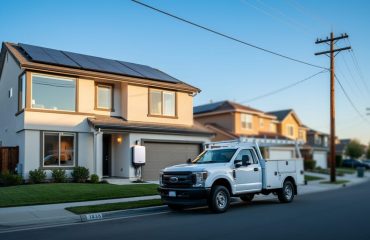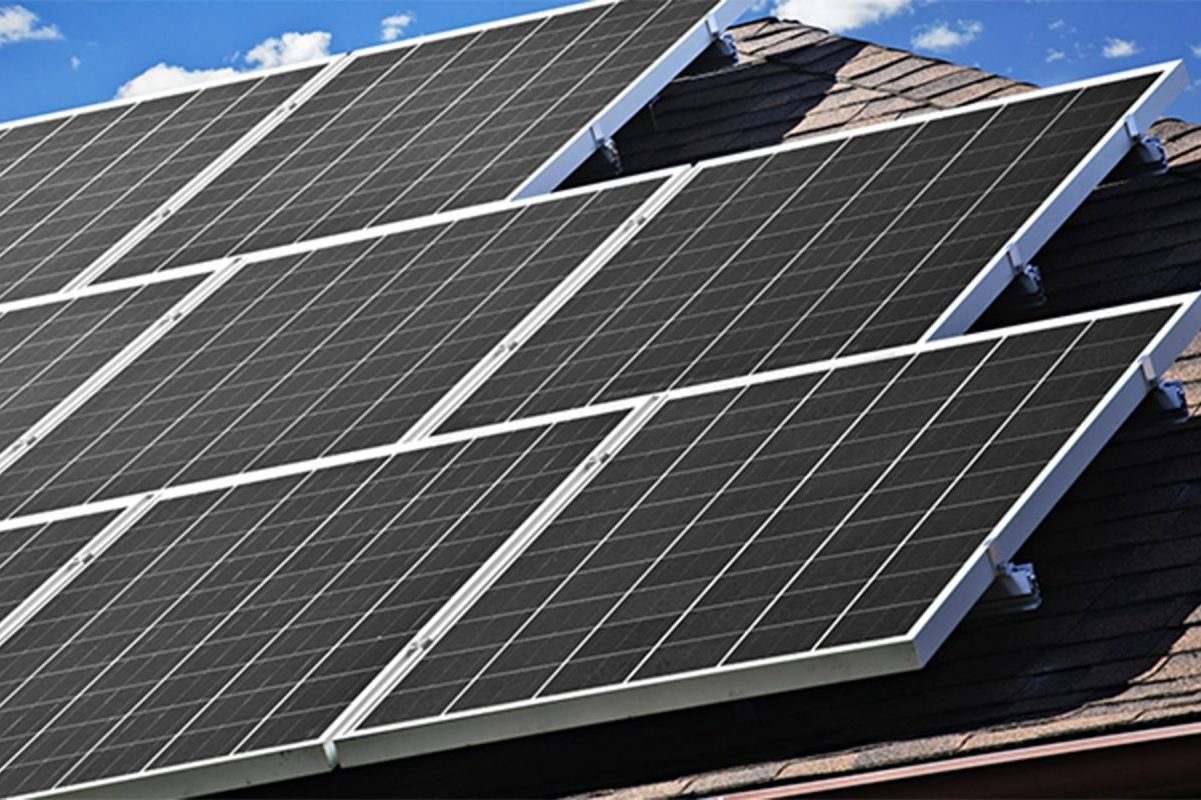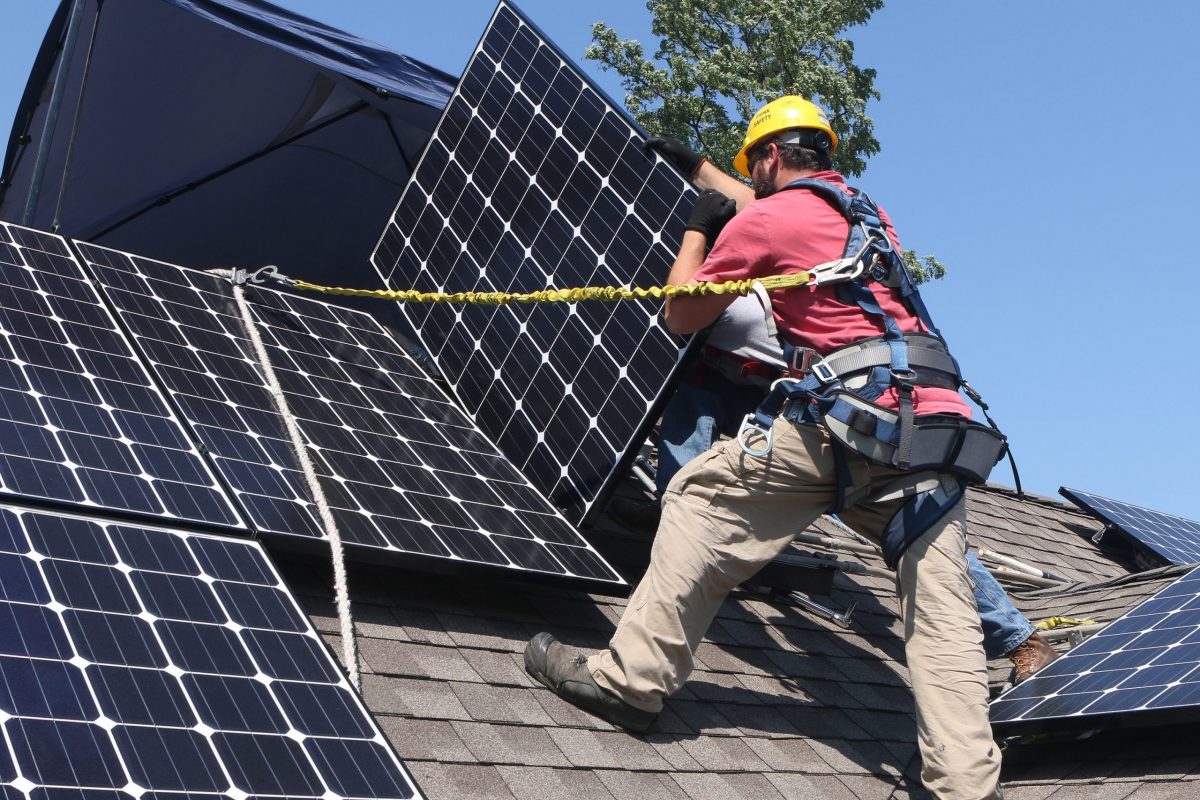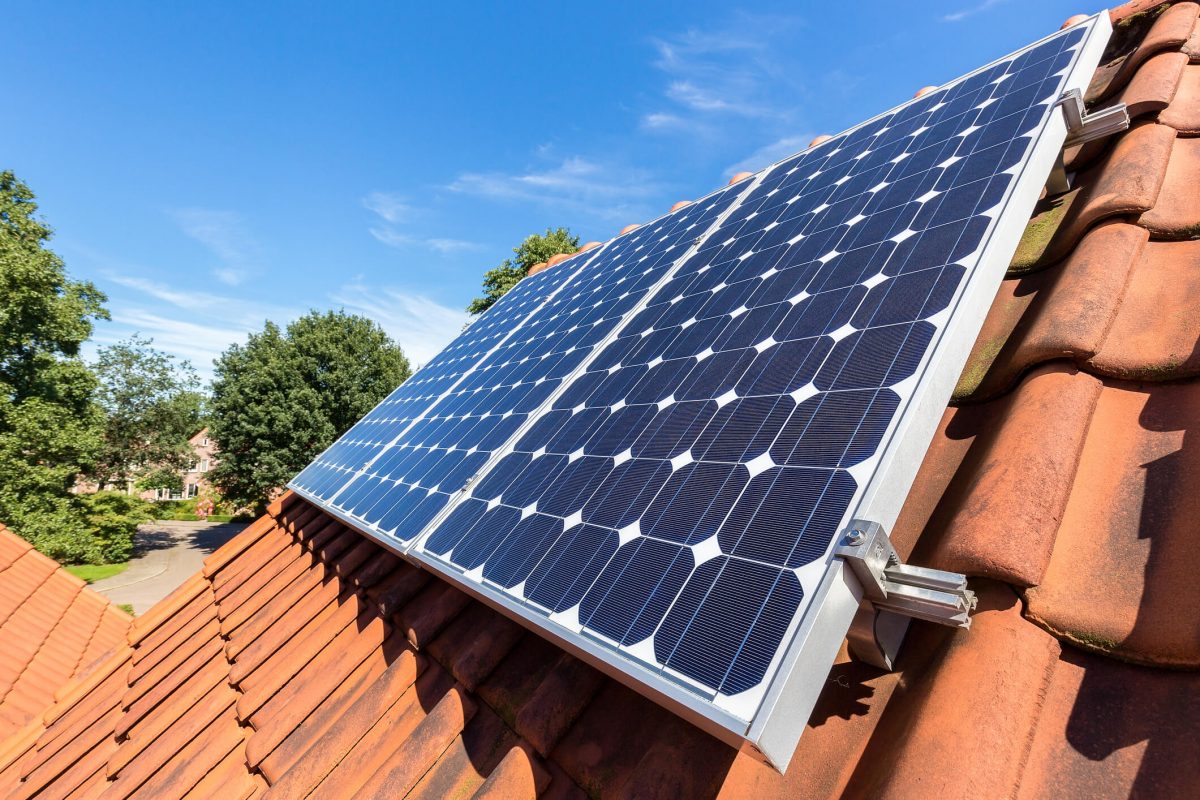Living in an apartment no longer means missing out on the solar energy revolution. Today’s innovative solar solutions – from portable balcony panels to community solar programs – make clean energy accessible to renters and apartment dwellers alike. While traditional rooftop installations may not be an option, modern alternatives like plug-in solar devices, window-mounted panels, and shared solar subscriptions offer practical ways to harness solar power without major structural modifications.
For apartment residents looking to embrace renewable energy, the path forward is clearer than ever. Building owners are increasingly partnering with solar providers to install shared systems that benefit multiple units. Individual tenants can opt for compact solar solutions that require no permanent installation. Even in buildings where physical panels aren’t feasible, virtual net metering allows residents to claim their share of solar energy generated off-site.
This guide explores the most effective ways to bring solar power into apartment living, breaking down the options, costs, and benefits for both property managers and residents. Whether you’re a building owner exploring large-scale solutions or a tenant seeking personal solar alternatives, you’ll discover practical approaches that fit your situation and budget.
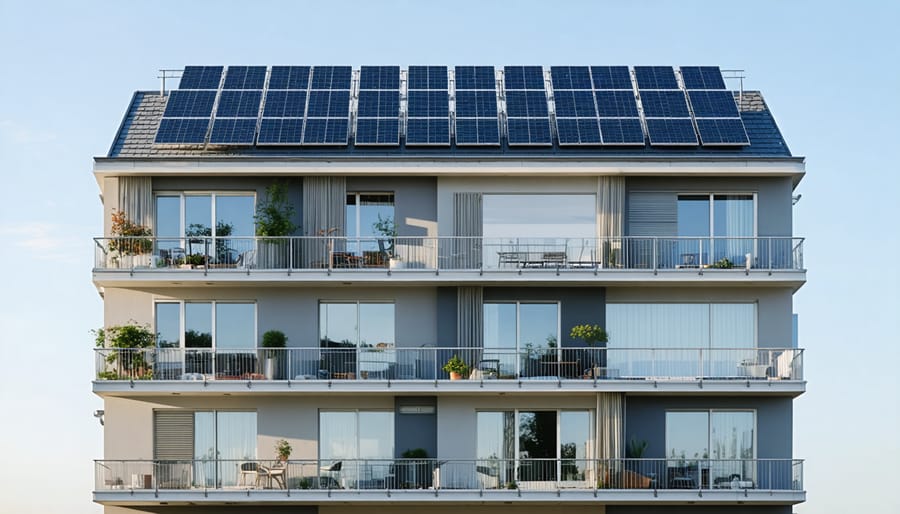
Why Apartments Can (and Should) Go Solar
Financial Benefits for Property Owners
Installing solar panels in apartment buildings can significantly revolutionize energy efficiency while delivering impressive financial returns for property owners. The initial investment typically pays for itself within 5-7 years through reduced energy costs, with systems continuing to generate savings for 25-30 years.
Property owners can take advantage of numerous financial incentives, including the federal solar tax credit, which currently offers a 30% deduction on installation costs. Many states and local utilities provide additional rebates and incentives, making the transition to solar even more affordable.
Buildings with solar installations often see a marked increase in property value, with studies showing a 3-4% average boost in resale value. This green upgrade also attracts environmentally conscious tenants willing to pay premium rates for sustainable living spaces. Additionally, property owners can generate extra income by selling excess power back to the grid through net metering programs.
The reduced operating costs and increased rental appeal make solar installations a smart long-term investment for apartment building owners looking to maximize their property’s financial potential while contributing to environmental sustainability.
Advantages for Tenants
Switching to solar energy offers apartment tenants several compelling advantages, starting with significant savings on monthly electricity bills. By participating in a solar program, tenants can typically reduce their energy costs by 10-30%, depending on their location and energy consumption patterns. These savings accumulate over time, providing substantial financial benefits without requiring any upfront investment.
Beyond the financial advantages, tenants contribute to environmental sustainability by choosing solar power. A single apartment unit using solar energy can reduce carbon emissions by approximately 3-4 metric tons annually – equivalent to taking a car off the road for an entire year. This makes it an excellent option for environmentally conscious renters who want to minimize their carbon footprint.
Many solar programs for apartments also offer energy monitoring tools, allowing tenants to track their consumption and savings in real-time. This visibility helps in making informed decisions about energy usage and maximizing the benefits of solar power. Additionally, some utility companies offer special rates or incentives for residents in solar-equipped buildings, further enhancing the financial advantages of choosing a solar-powered apartment.
Technical Solutions for Apartment Solar Installation
Rooftop Solar Arrays
Rooftop solar arrays remain the most common and efficient way to harness solar energy for apartment buildings. These installations take advantage of otherwise unused roof space, converting it into a valuable energy-generating asset. Modern solar technologies allow property owners to optimize solar panel design for maximum energy production, even with limited space.
Today’s rooftop installations can be customized to work with various roof types, from flat surfaces to sloped designs. Advanced mounting systems help distribute weight evenly across the roof while maintaining structural integrity. Many installations can now achieve up to 30% more energy production compared to older systems, thanks to improved panel efficiency and smart placement strategies.
Space optimization techniques include using high-efficiency panels that generate more power per square foot, implementing dual-tilt systems for flat roofs, and utilizing microinverter technology to minimize power losses from partial shading. Some innovative solutions even incorporate bifacial panels that capture reflected sunlight from light-colored roofing materials, boosting overall energy production.
For apartment buildings with limited roof space, vertical mounting options and creative array configurations can help maximize available area. Many modern systems also include smart monitoring capabilities, allowing property managers to track performance and maintain optimal energy production throughout the year.
Solar Carports and Ground Installations
When roof space is limited, solar carports and ground-mounted installations offer excellent alternatives for apartment complexes. Solar carports serve a dual purpose by providing covered parking while generating clean energy. These structures can be designed to accommodate multiple vehicles while utilizing the otherwise unused space above parking areas to generate substantial power for the building.
Ground-mounted solar installations are another viable option for properties with available land. These systems can be optimally positioned to capture maximum sunlight and are easily accessible for maintenance. They’re particularly effective for apartment complexes with unused green spaces or vacant lots that could be repurposed for energy generation.
Both options offer distinct advantages over traditional roof installations. Solar carports protect vehicles from weather damage while producing energy, potentially increasing property value and tenant satisfaction. Ground installations can be scaled according to available space and energy needs, with the flexibility to expand the system over time.
Installation costs for these alternatives are comparable to roof-mounted systems, and in some cases, may be more cost-effective due to easier installation and maintenance access. Many apartment complexes find that combining different installation methods – such as roof panels with carports or ground arrays – creates the most comprehensive solar solution for their energy needs.
For properties considering these options, it’s worth noting that both carports and ground installations can be equipped with advanced tracking systems to maximize energy production throughout the day.

Energy Distribution Systems
In apartment buildings, solar energy distribution requires thoughtful planning and specialized systems to ensure fair and efficient power allocation among multiple units. Modern distribution methods typically employ one of two approaches: individual metering or virtual net metering.
Individual metering systems allow each apartment to have its dedicated connection to specific solar panels, providing residents with direct control over their solar power consumption. This setup requires solar-ready infrastructure that includes separate inverters and monitoring systems for each unit.
Virtual net metering, increasingly popular in multi-unit buildings, enables the fair distribution of solar benefits without requiring individual physical connections. The system allocates solar credits to residents based on predetermined arrangements, often proportional to unit size or energy usage patterns. This approach simplifies installation and reduces equipment costs while ensuring equitable distribution.
Many modern apartments also incorporate smart energy management systems that optimize power distribution in real-time. These systems automatically direct solar power to units with the highest immediate demand, maximizing efficiency and reducing waste. Excess energy can be stored in shared battery systems or fed back into the grid, providing additional benefits to all residents.
Building managers can monitor and adjust distribution patterns through user-friendly software platforms, ensuring fair access while maintaining system performance. This flexibility allows for easy adjustments as tenant needs change or units turn over.
Getting Started: Implementation Steps
Assessment and Planning
Before installing solar panels in your apartment building, a thorough assessment of your property’s potential is essential. Start by evaluating your building’s solar exposure, considering factors like roof orientation, shading from nearby structures, and available space. South-facing surfaces typically offer optimal sunlight exposure in the Northern Hemisphere.
To design your solar system effectively, collect at least 12 months of electricity usage data from your building. This information helps determine the appropriate system size and potential cost savings. Consider both common area energy needs and individual unit consumption patterns.
Work with a qualified solar consultant to conduct a professional site assessment. They’ll analyze structural integrity, electrical infrastructure, and local building codes. The assessment should also include a shade analysis using specialized tools to measure sun exposure throughout the year.
Don’t forget to review local regulations and HOA guidelines regarding solar installations. Many areas now have solar access laws that protect your right to install panels, but it’s important to understand any specific requirements or restrictions that may apply.
Finally, create a preliminary budget that accounts for equipment costs, installation, permits, and potential incentives. Many utilities and governments offer special programs for multi-unit buildings, which can significantly reduce your initial investment.
Legal and Administrative Requirements
Before installing solar panels in your apartment, you’ll need to navigate several legal and administrative requirements. Start by checking your local building codes and zoning laws, which vary by municipality. Most jurisdictions require specific permits for solar installations, including electrical and structural permits.
If you’re renting, obtain written permission from your landlord. For condo owners, you’ll need approval from your Homeowners Association (HOA). Review your HOA bylaws carefully, as some may have restrictions on solar installations. Fortunately, many states have “solar rights laws” that prevent HOAs from completely prohibiting solar installations.
Documentation typically required includes:
– Building permits
– Electrical permits
– HOA approval letters
– Utility interconnection agreement
– Professional engineering certification
– Insurance documentation
Work with your solar installer to ensure compliance with local regulations. They often handle permit applications and can guide you through the approval process. Keep copies of all documentation for future reference and insurance purposes. Most jurisdictions also require final inspections to ensure the installation meets safety standards and building codes.
Choosing the Right Installation Partner
Selecting the right installation partner is crucial for a successful solar energy project in your apartment building. Start by verifying that potential installers are certified by the North American Board of Certified Energy Practitioners (NABCEP). This certification ensures they meet industry standards and have the necessary expertise.
Look for companies with specific experience in multi-unit residential installations, as these projects require different considerations than single-family homes. Request references from previous apartment installations and take time to contact these references about their experience.
Compare quotes from at least three different installers, but don’t make decisions based solely on price. Consider their warranty offerings, maintenance services, and track record of completing projects on time. Quality installers should provide detailed proposals that include system specifications, estimated energy production, and clear timeline expectations.
Check online reviews and ratings, but also verify their insurance coverage and local licensing. A reputable installer will be transparent about their credentials and happy to answer your questions. They should also help you navigate building permits and utility company requirements, making the process smoother for all residents.
Making the Investment Work
Available Incentives and Rebates
Several attractive financial incentives make solar installations for apartment buildings more affordable than ever. The federal Investment Tax Credit (ITC) allows property owners to deduct 30% of their solar installation costs from their federal taxes through 2032. Many states offer additional tax credits, ranging from 10% to 25% of installation costs, while local utilities frequently provide performance-based incentives that pay for the electricity your system generates.
Property owners can also take advantage of Modified Accelerated Cost Recovery System (MACRS), which allows for depreciation of solar equipment over five years. Some municipalities offer property tax exemptions for solar improvements, ensuring your building’s value increase won’t raise your tax burden.
For apartment residents, community solar programs provide an alternative path to solar benefits. These programs often offer immediate electricity bill savings of 5-15% with no upfront costs. Many states also have specific multi-family housing solar incentives, which can include grants, low-interest loans, or additional rebates designed specifically for apartment buildings.
Remember to check with local authorities and utilities, as available incentives vary by location and can change periodically.
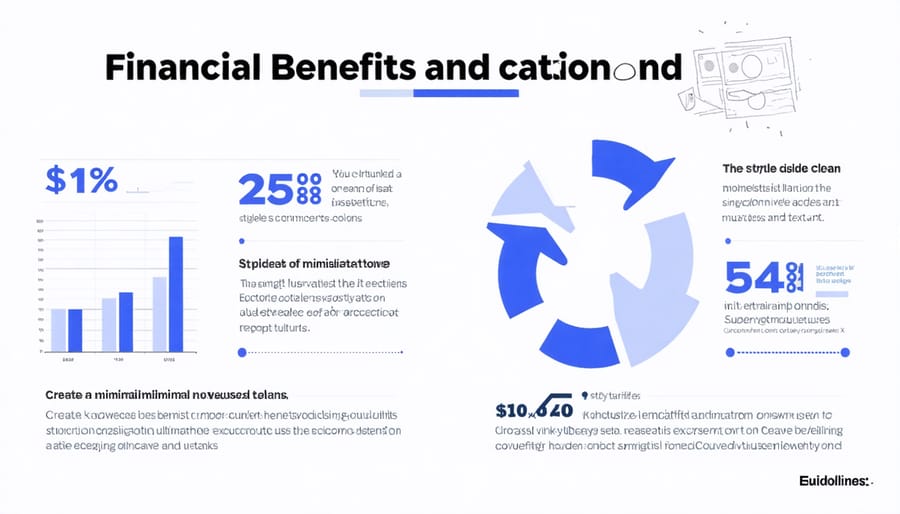
Financing Options
Making solar energy accessible for your apartment doesn’t have to strain your finances. Several funding options can help you go solar without a substantial upfront investment. Solar loans, similar to home improvement loans, offer competitive interest rates and flexible repayment terms, making monthly payments manageable.
Solar leases and power purchase agreements (PPAs) provide an alternative path with little to no upfront costs. These arrangements allow you to benefit from solar power while a third party owns and maintains the system. You simply pay a monthly fee that’s typically lower than your current electricity bill.
Many states offer tax incentives, rebates, and grants specifically for multi-unit residential solar installations. The federal solar tax credit currently allows you to deduct 30% of your solar system costs from your federal taxes. Some utility companies also provide additional incentives or rebate programs for apartment solar installations.
Community solar programs present another budget-friendly option, allowing apartment residents to subscribe to a shared solar facility and receive credits on their electricity bills. Check with local solar installers or energy consultants to explore which financing option best suits your situation.
Solar energy for apartments is no longer a distant dream but a practical reality that’s becoming increasingly accessible. By implementing solutions like portable solar panels, community solar programs, or working with your landlord to install rooftop systems, you can join the renewable energy revolution regardless of your living situation. The financial benefits, including reduced energy bills and potential tax incentives, make the initial investment worthwhile. Environmental impact aside, solar power offers apartment dwellers greater energy independence and protection against rising utility costs. Take the first step today by assessing your apartment’s solar potential, consulting with local solar providers, or exploring community solar options in your area. With various solutions available, there’s never been a better time to embrace clean, sustainable energy in your apartment living space.






